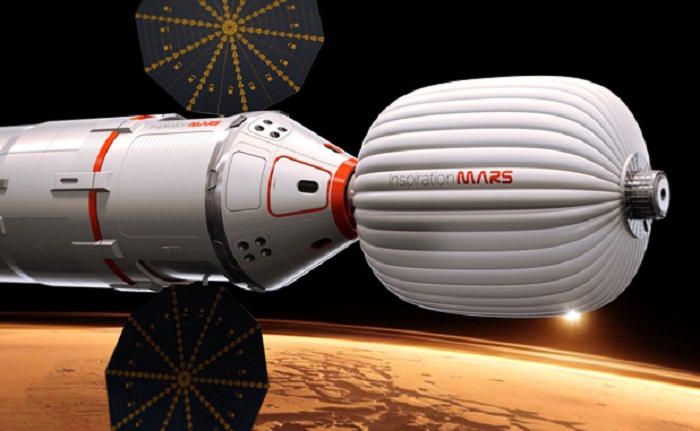.

A hurry-up launch in 2021 for a human flyby of Mars proposed by pioneer space tourist Dennis Tito would make a good “bridge” between the International Space Station and more sustainable missions closer to Earth, according to experts testifying before a skeptical House Science Committee Feb. 27.
The mission would require an advanced version of NASA’s heavy-lift Space Launch System (SLS) and other new hardware to take advantage of a unique opportunity to reach Mars with a gravity assist from Venus. Committee witnesses were unwilling to put a price tag on that work, and conservative members of the panel said they were uneasy with open-ended spending for a high-risk project on a tight deadline.
“Do you really see right now that there’s a commitment in this country so that we don’t start down this trail, spending a lot of money, and then at the end of the trail not have accomplished the mission because the window wasn’t there?” Rep. Dana Rohrabacher (R-Calif.), asked Sandra Magnus, executive director of the American Institute of Aeronautics and Astronautics.
Magnus, an astronaut and former ISS crew member, had testified that the U.S. would be capable of conducting the mission, provided Congress makes adequate funds available. Tito, who was the first “spaceflight participant” to purchase a ride to the space station on a Russian Soyuz crew vehicle, has testified that he could tap “private philanthropy” for $300 million toward the 2021 mission, and believes NASA could develop the necessary hardware for $100 million a year over the next seven years.
“I continue to believe, as do many Americans, that Mars is the logical destination to put human space exploration back on track and demonstrate the ‘can do’ spirit that seems to have faded over time,” Tito said in a statement after the hearing. “The window of opportunity in 2021 is challenging but achievable and waiting to be claimed.”
Doug Cooke, a former NASA associate administrator for exploration systems who has advised Tito’s Inspiration Mars Foundation on the Mars flyby, testified that the 70-ton variant of the SLS is on track for its critical design review this year, and an instrumented prototype of NASA’s Orion multipurpose crew vehicle is set for a Delta IV flight test in September. That test is designed to validate the design of the heat shield that would be needed to protect an Orion returning from the vicinity of the Moon, but Cooke testified that a more robust shield would be needed for the planetary-return velocities associated with reentry after a Mars flyby.
Also required by 2021 would be the advanced, “dual-use” upper stage on NASA’s books to take the SLS to its intermediate, 105-ton capability to low Earth orbit. Ultimately, the agency plans to add advanced strap-on boosters to give the big rocket the 130-ton-to-LEO capability Congress mandated.
After detailed study, Tito and his engineers rejected an early concept of a 501-day direct flight around Mars with a two-person crew during a particularly opportune launch window in 2018, and opted instead for the 580-day flight in 2021 that would fly by Venus and Earth before heading to Mars. Once there, Cooke said, the Orion crew would have 40 hours to observe the Red Planet from a distance that would make it appear at least as large as the Moon from Earth.
The mission also would require a habitat with advanced life support systems where the crew would reside during the long transits between planets, Cooke said. Tito funded a year-long study by Paragon Space Development Corp. that produced a benchtop life support system. The system appeared to meet the 2021 requirements, but testing on the ISS probably would be required. The habitat itself could be an Orbital Sciences Corp. Cygnus commercial cargo module, or perhaps an inflatable habitat provided by Bigelow Aerospace, according to Taber MacCallum, the Paragon CEO and chief technology officer.
Scott Pace, director of the Space Policy Institute at George Washington University and a White House and NASA official under President George W. Bush, testified that he personally would favor a return to the Moon as the next human step beyond low Earth orbit. But the 2021 flyby would be a useful project to focus development on the systems that would be needed for work in cislunar space, asteroids and perhaps the Martian moons that would not require development of an expensive lander.
“The Mars flyby mission serves as an interesting potential bridge between where we are with the ISS, where we would like to be with Mars, and where our international partners and commercial opportunities are with human spaceflight beyond low Earth orbit,” Pace said.
Quelle: Aviationweek
